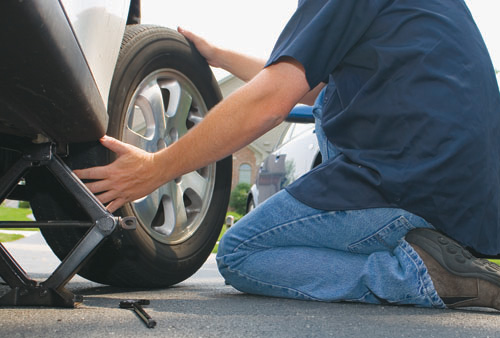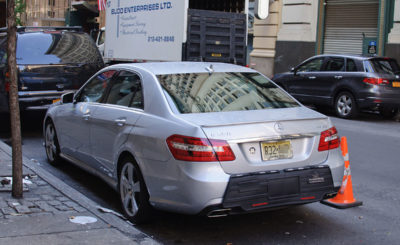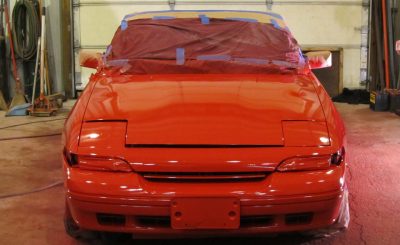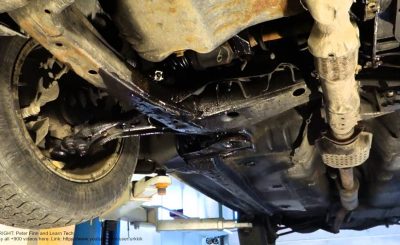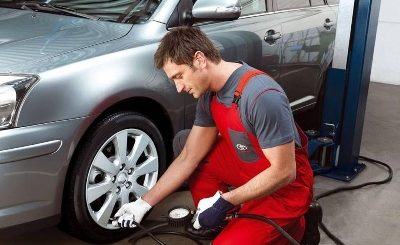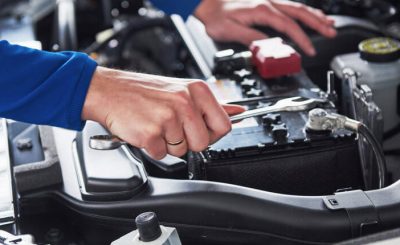A flat tire always spoils your day. Changing the flat is something that one doesn’t want to do on the road, as it is unpleasant and also a dangerous task. Research has found that tire blowouts result in tens of thousands of accidents, including many fatalities. Thankfully, most of flat tires do not result in accidents. The best way to prevent a flat is getting your tires inspected by a qualified tire specialist regularly.
Tools needed: A spare tire, a jack in good condition, and a lug wrench.
Steps to Change a Flat Tire
1. Put your vehicle on a flat surface- Make sure your vehicle is on a flat surface, or lifting the car may result in damage. Turn on the hazard lights.
2. Remove the hubcap and loosen the lug nuts- First remove the hubcaps, if any, and loosen all the lug nuts on the tire, but do not remove them. It is best to use an anti-slip lug wrench, as it will give a firm grip to loosen the nuts.
3. Place the jack underneath your car- Using the owner’s manual, place the jack in the proper location so that it won’t end up in damaging you or the vehicle.
4. Jack up- Lift the vehicle by cranking the handle of the jack. Lift the vehicle until you can easily remove the tire.
5. Remove the nuts- Now remove the loosened nuts and store them safely. Do not lose them, as you need them to attach the spare tire.
6. Remove the flat tire- Hold the tire and pull it towards you by lifting it slightly. Tires may weigh from 20 to 30 pounds or more depending on the vehicle, so be careful while lifting it.
7. Move your spare- Mount the spare on the hub, place the nuts, and tighten them just with your hands – not using wrench.
8. Lower the jack- Lower the car until it is in contact with the ground, and remove the jack.
9. Tighten the lug nuts- Now tighten the lug nuts that you previously tightened with your hands. First tighten one nut, then the nut most opposite it. Repeat this pattern, always moving to tighten the next most opposite nut. Once all the nuts are tightened to some extent, tighten them more securely one-by-one.
10. Repair the flat (or replace it) as soon as possible- You may not know when you will need a spare tire again.
Things to Take Care of When Changing the Flat Tire
1. Wait until you have a flat before you check your spare- Check to make sure you have the proper tools (jack, lug wrench and the spare tire) before traveling.
2. Changing a flat in an unsafe location- Try to move the vehicle off the road, away from the dangers of traffic, before attempting to change a tire.
3. Ignoring safety visible measures- Do not forget to turn on your hazard lights. Also try to keep the doors open, to provide a buffer to keep other vehicles away.
4. Forgetting to block the tire- Jacked up vehicles may move if the other tires are not blocked. Block the other tires using a brick or stone, and apply emergency brakes before jacking up the vehicle.
5. Lifting up without loosening nuts- Attempting to loosen the nuts when the car is raised ends up spinning the wheel, as you have to apply a lot of brute force. Loosening them before lifting is better, as the ground prevents the wheel from spinning.
6. Raising the car without removing the spare- Remove the spare tire from the vehicle before lifting it on the jack. Interacting with a vehicle that is on a jack can be dangerous, and you may lean or pull on the vehicle while trying to remove a spare tire from the trunk.
7. Take a jack for granted- Be careful while handling a car jack. They can result in serious injuries or death, as the weight of a car can be very dangerous.
Before Your Next Flat Tire
Before your next flat, get yourself familiarized with the vehicle’s manual on the proper procedure for changing a tire. Practice operating the jack and wrench. If they are rusty, then lubricate them, so that they will be easy to use. Store a couple of barking blocks, tire inflator, flashlight, tire sealant, reflective road markers etc, in your car in order to be prepared for emergencies. Periodically check your tires to make sure they are in good condition, including your spare. Usually spares are the ones neglected, as they will be out of sight.
